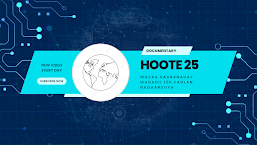**Predictive Analytics: The Power of Data-Driven Insights**
Predictive analytics is a branch of advanced analytics that uses data, statistical algorithms, and machine learning techniques to identify the likelihood of future outcomes based on historical data. It involves extracting information from data sets to determine patterns and trends, which can then be used to predict future events or behaviors. Predictive analytics has become increasingly important in various industries, from finance and healthcare to marketing and manufacturing. This article will explore the concept of predictive analytics, its applications, challenges, and future directions.
**1. Understanding Predictive Analytics**
Predictive analytics involves using historical data to make predictions about future events or behaviors. It uses a combination of statistical algorithms, machine learning techniques, and data mining to identify patterns and trends in data sets. These patterns and trends can then be used to make predictions about future outcomes.
**2. Applications of Predictive Analytics**
Predictive analytics has a wide range of applications across different industries:
- **Finance**: Predictive analytics is used in finance to predict stock prices, identify fraudulent transactions, and assess credit risk.
- **Healthcare**: Predictive analytics is used in healthcare to predict patient outcomes, identify high-risk patients, and improve patient care.
- **Marketing**: Predictive analytics is used in marketing to predict customer behavior, identify high-value customers, and personalize marketing campaigns.
- **Manufacturing**: Predictive analytics is used in manufacturing to predict equipment failures, optimize production processes, and reduce downtime.
- **Retail**: Predictive analytics is used in retail to predict demand, optimize inventory levels, and improve customer satisfaction.
**3. Challenges in Predictive Analytics**
Despite its widespread use, predictive analytics faces several challenges:
- **Data Quality**: Predictive analytics relies on high-quality data, and poor data quality can lead to inaccurate predictions.
- **Data Privacy**: Predictive analytics involves analyzing large amounts of data, which can raise privacy concerns.
- **Model Interpretability**: Predictive analytics models can be complex, making it difficult to interpret the results and understand how the predictions were made.
- **Overfitting**: Overfitting occurs when a model is too complex and fits the training data too closely, leading to poor performance on new data.
- **Bias and Fairness**: Predictive analytics models can be biased, leading to unfair outcomes for certain groups.
**4. Future Directions**
Despite these challenges, predictive analytics continues to evolve, with researchers exploring new techniques and approaches to improve accuracy and performance. Some future directions in predictive analytics include:
- **Explainable AI**: Developing techniques for making predictive analytics models more interpretable and explainable.
- **Ethical Considerations**: Addressing ethical considerations in predictive analytics, such as privacy concerns and bias in algorithms.
- **Automated Machine Learning**: Developing techniques for automating the process of building and deploying predictive analytics models.
- **Real-time Predictions**: Developing techniques for making real-time predictions, allowing organizations to respond quickly to changing conditions.
- **Interdisciplinary Collaboration**: Encouraging collaboration between data scientists, domain experts, and other stakeholders to develop more accurate and useful predictive analytics models.
**5. Conclusion**
Predictive analytics is a powerful tool for making predictions about future events or behaviors based on historical data. It has a wide range of applications across different industries, from finance and healthcare to marketing and manufacturing. Despite its challenges, predictive analytics continues to evolve, with researchers exploring new techniques and approaches to improve accuracy and performance. As the field continues to advance, predictive analytics is likely to play an increasingly important role in helping organizations make data-driven decisions.


.jpeg)


.jpg)
0 Comments